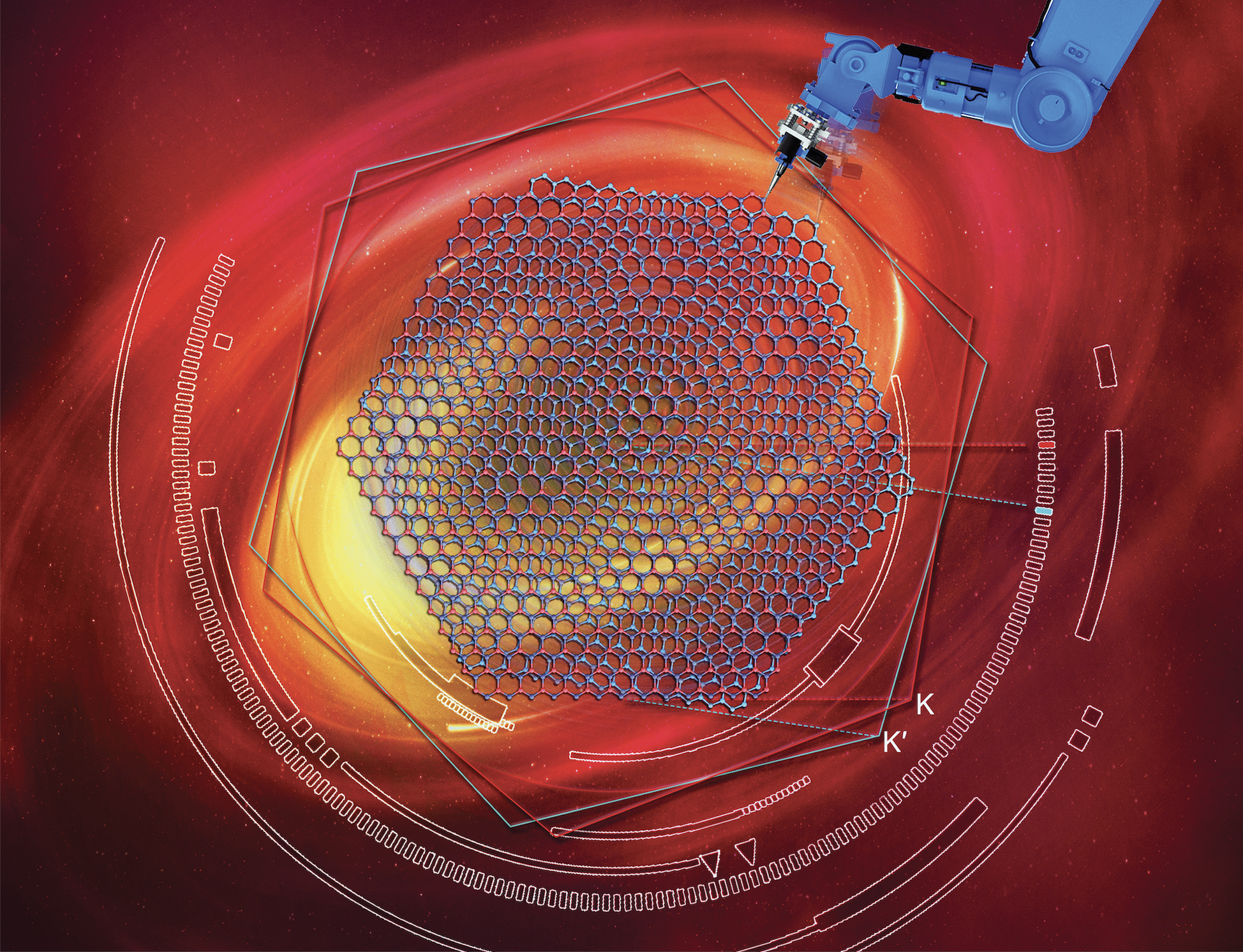题目:二维材料TMDCs莫尔超晶格的光子态调控
时间:2023年6月06日上午10点
地点:一教106会议室
报告摘要:2018 年,麻省理工学院等研究人员在“魔角”石墨烯结构中实现了莫特绝缘体和非常规超导电性的发现,这一发现开辟了凝聚态物理的全新领域。构造人工微结构来控制微观粒子的量子态是实现固态系统量子调控的重要手段。二维材料莫尔超晶格为探索新的相关物理基础开辟了新的机会。莫尔超晶格在面内形成纳米尺度的半导体超晶格结构,可以调控激子的能级。晶格周期可由转角连续调控,提供了在纳米尺度内调控实物粒子量子态的平台。在基于石墨烯的莫尔超晶格的推动下,预计基于二维转角TMDCs的莫尔超晶格可能具有更平坦的微带,从而改善长程库仑相互作用的效果。相比于扭曲的双层石墨烯,扁平带仅出现在魔角。而扭曲的TMDCs双层具有更宽的角度范围,这使得它们在实验上相对容易实现。此外,TMDCs材料的大自旋-轨道耦合为拓扑带工程和自旋/谷的光学控制提供了丰富的机会。因此,基于TMDCs材料的莫尔超晶格可以为探索强相关的新型量子现象提供新的维度。这种新策略将有望用于量子计算、量子通讯、新型超导体等领域。本报告主要介绍我们课题组在二维材料TMDCs莫尔超晶格的制备及其莫尔激子的光学调控的最新研究成果和相关方向的展望。

关键字: 半导体材料TMDCs; 莫尔超晶格; 莫尔激子,莫尔势
参考文献:
Zheng, H., Wu, B., Li, S., YP, Liu, et al. Light Sci Appl. 2023, 12, 117.
Wu, B., Zheng, H., Li, S., YP, Liu, et al. Light Sci Appl. 2022, 11, 166.
YP, Liu., AL Pan., XD Duan., et al. Chem Soc Rev, 2021,50, 6401-6422.
Wu, B., Zheng, H., YP, Liu, et al. Nano Research, 2022, 16,3435-3442.
Wu, B., Zheng, H., YP, Liu, et al. Nanoscale, 2022,16, 3429-3434.
Wu, B., Zheng, H., YP, Liu, et al. Nano Research, 2022,14, 12447-12454.
Zheng, H., Wu, B., YP, Liu, et al. Advanced Materials, 2023, 35,16, 2210909
Zheng, H., Wu, B., YP, Liu, et al. Small, 2023,
Li, SF., Zheng, H., YP, Liu, et al. Nano Research, 2022, 151, 7688–7694
Title: Optical manipulation of moiré superlattices in twisted transition metal dichalcogenides
Abstract: In 2018, researchers from MIT and other institutions made a breakthrough in condensed matter physics by discovering the phenomena of Mott insulators and unconventional superconductivity in "magic angle" graphene structures. One important means of achieving quantum control of solid-state systems is by constructing artificial microstructures to control the quantum states of microscopic particles. Moiré superlattices of two-dimensional materials provide new opportunities for exploring new correlated physical phenomena. These superlattices form semiconductor superlattice structures at the nanoscale in the plane, which can control the energy levels of excitons. The lattice period can be continuously adjusted by twisting, providing a platform for controlling the quantum states of physical particles at the nanoscale. Driven by moiré superlattices based on graphene, moiré superlattices based on twisted transition metal dichalcogenides (TMDCs) are expected to have flatter microbands, which can improve the effect of long-range Coulomb interactions. Compared to twisted bilayer graphene, flat bands only appear at the magic angle. However, twisted TMDC bilayers have a wider-angle range, making them relatively easy to implement experimentally. In addition, the large spin-orbit coupling of TMDC materials provides rich opportunities for topological band engineering and optical control of spin/valley. Therefore, moiré superlattices based on TMDC materials can provide new dimensions for exploring new correlated quantum phenomena, and this new strategy is expected to be used in the fields of quantum computing, quantum communication, and novel superconductors. This report introduces the latest research results and related directions of our research group on the preparation of TMDC moiré superlattices and the optical control of moiré excitons.
报告人简介
刘艳平,男,汉族,湖南茶陵人。中南大学物理与电子学院教授、博士生导师。“芙蓉学者奖励计划”特聘教授,湖南省杰出青年基金获得者、中国科协“英才计划”导师、湖南省青年百人计划、湖南省科技创新平台与人才计划优秀人才、湖南省侨联特聘专家、湖南省十大杰出青年海归人物。衡阳师范学院本科学士、新加坡南洋理工大学物理哲学博士、日本理化学研究所(RIKEN)联合培养博士、美国加州大学伯克利分校博士后。主要研究方向为低维量子材料与器件的研究。回国近五年以第一或通讯作者在Chem Soc Rev、Light: Science & Applications、Nature Communications、Advanced Materials、Nano Letters、ACS Nano、Nano-micro Letters、Small、Nano Research等高水平SCI期刊上发表论文50多篇。目前担任Nano Research青年编委,Journal of Electronics Science and Technology执行编委,2023年入选Nano Research编委团队(Editorial Board)。